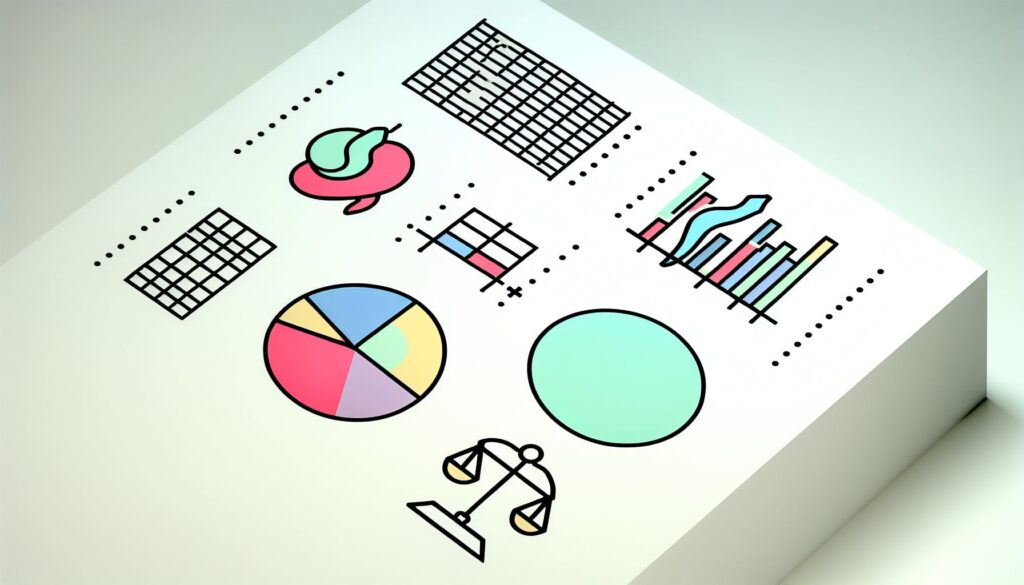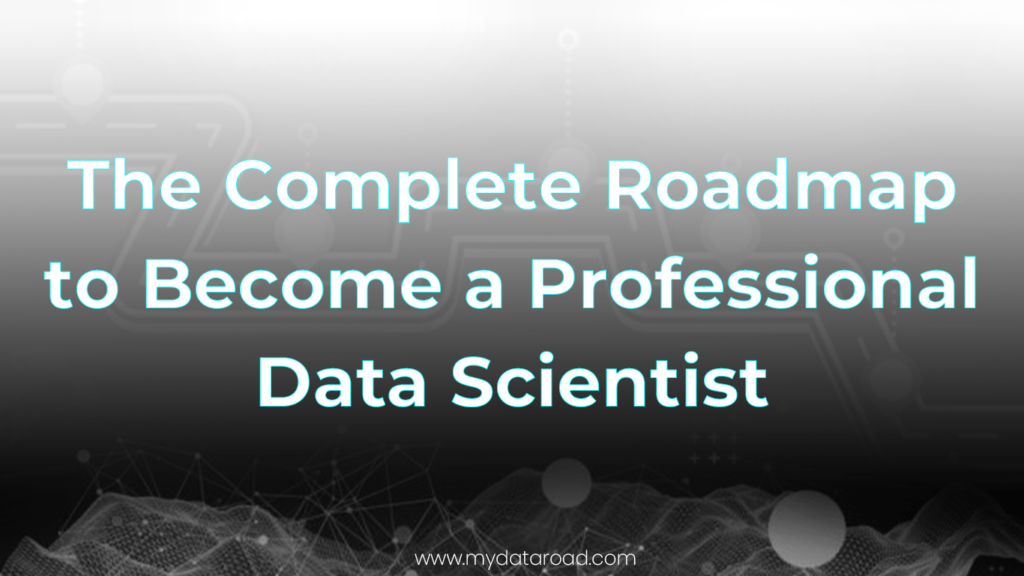As a beginner exploring the data analysis field, it’s common to feel overwhelmed by the breadth of concepts and tools to learn.
Luckily, this cheat sheet for data analysts concisely introduces all the key foundations – including statistical formulas, Python and Excel skills, visualization techniques, machine learning basics, and more – to set you up for success.
Overview essential data analysis definitions and the data analyst role Discover must-know Excel and Python commands tailored to data tasks Reference key data viz, stats, and machine learning concepts in one place Get specialized cheat sheets to level up your analyst skills fast
Introduction to Data Analysis
Data analysis is the process of inspecting, cleaning, transforming, and modeling data to discover useful information and support decision-making. It is a key skill for aspiring data analysts to master. This section will provide an introduction to data analysis by covering:
What is Data Analysis
Data analysis refers to the process of inspecting, cleaning, transforming, and modeling data to discover useful information and support decision-making. It incorporates skills such as:
- Data wrangling – organizing messy, inconsistent, and incomplete data into a structured format for easier analysis
- Data visualization – creating graphs, charts, and other visuals to intuitively communicate insights from data
- Machine learning – applying algorithms that can learn from data to make predictions or decisions without explicit programming
- Statistical analysis – using mathematical and statistical techniques to describe, analyze, and draw conclusions from data
Together, these skills empower data analysts to derive value from data.
Understanding the Data Analyst Role
A data analyst is responsible for collecting, processing and performing analysis on data. Their key duties include:
- Data wrangling – structuring, cleaning and formatting data
- Analysis – analyzing structured data to identify trends and patterns
- Visualization – visualizing data insights through charts, graphs and dashboards
- Modeling – developing machine learning models to predict outcomes from data
Data analysts identify trends and patterns in data to derive insights and inform business strategy. They are fluent in tools like Excel, SQL, Python and data visualization programs.
Most Common Data Analysis Techniques
Some of the most popular data analysis methods data analysts should be familiar with include:
- Descriptive analytics – using statistics to describe and summarize data to uncover insights
- Data mining – discovering patterns in data through machine learning models
- Predictive modeling – making predictions about future outcomes using historical data
- Data visualization – leveraging visuals like charts, graphs and dashboards to intuitively communicate data insights
- Statistical analysis – applying statistical tests to make inferences and extrapolate results
Mastering these core techniques is key for aspiring data analysts looking to excel in the field. Refer to a data analyst cheat sheet for a quick overview of must-know data analysis concepts.
Data Analyst Cheat Sheet Essentials
This section provides a high-level overview of key tools and techniques useful for data analysts. It aims to serve as a handy reference guide.
Data Analyst Cheat Sheet for Excel
Excel is one of the most popular tools for manipulating, organizing and analyzing data. Here is a quick reference cheat sheet of useful Excel functions:
VLOOKUP– Looks up vertical data from another tableINDEX/MATCH– Alternative to VLOOKUP for flexible data retrievalPivotTables– Summarize and aggregate large datasetsCOUNTIF– Count cells based on criteriaConcatenate– Merge text from multiple cellsText to Columns– Split delimited text into separate columns
Familiarity with these functions allows efficient data wrangling and analysis.
Data Analysis Cheat Sheet for Python
Python has become a go-to language for data analysis. Below are some of the most popular Python libraries:
- Pandas – Manipulate and analyze datasets
- NumPy – Numeric and scientific computing
- Matplotlib – Data visualization and plotting
- Scikit-Learn – Machine learning algorithms
Understanding these core libraries unlocks effective data analysis capabilities in Python.
Data Visualization Techniques
Choosing appropriate visualizations is key to impactful data analysis. Here are helpful tips:
- Bar charts – Compare categorical data
- Line charts – View trends over time
- Scatter plots – Assess relationships between variables
- Heatmaps – Identify correlations and patterns
Matching chart types to your data and analysis objectives results in insightful, readable graphs.
Statistical Formulas and Concepts
Statistics provide the foundation for making data-driven decisions. Useful formulas and concepts include:
- Mean, median, mode – Measure central tendency
- Standard deviation – Spread of data
- p-values – Assess statistical significance
- Confidence intervals – Degree of certainty for estimates
- Statistical distributions – Models for data variability
Familiarity with these statistical building blocks is essential for rigorous data analysis.
Machine Learning Algorithms Overview
Machine learning extracts insights from data automatically. Below are some common algorithms:
- Linear regression – Predict numeric values
- Logistic regression – Model binary outcomes
- Decision trees – Segment data based on conditions
- Random forest – Ensemble method for classification/regression
- K-means – Cluster data into groups
Choosing suitable algorithms based on data and use case is key to developing high-quality models.
This cheat sheet summarizes key tools and techniques for efficient and effective data analysis. It serves as a handy quick reference guide for data analysts.
sbb-itb-0c864d8
Data Analytics Cheat Sheet PDF Resources
Data analysis can seem daunting to newcomers, with so many concepts, techniques, and tools to learn. That’s where cheat sheets come in handy! Cheat sheets condense complex information into an easy-to-reference format.
Having key data analysis frameworks, formulas, code snippets, terminology, and more compiled onto a single page allows you to quickly look up anything you need while working on analysis. Rather than interrupting your flow to search online or dig through textbooks, simply glance at your trusty cheat sheet.
Here are some great free PDF cheat sheets to help you conduct data analysis more efficiently:
Data Analyst Cheat Sheet PDF Free Downloads
When first getting started in data analytics, these beginner-friendly cheat sheets have you covered:
- Data Analysis Cheat Sheet – Dataquest’s 3-page overview of key analysis methods, Excel functions, R libraries, and Python modules.
- Data Science Cheat Sheet – A reference for terminal commands, data science flows, ML algorithms, Python data tools, and more.
- Data Visualization Cheat Sheet – Tips for visualizing different data types with tools like Tableau, Matplotlib, ggplot2.
These condensed, graphical references help reinforce core concepts.
Excel Data Analysis Cheat Sheet PDF
For analyzing data in Excel, these cheat sheets contain everything you need:
- Excel Formulas & Functions – CustomGuide’s 2-page cheat sheet covering over 100 of Excel’s most popular formulas and functions.
- Excel Analytics Cheat Sheet – Excel Campus’ overview of Excel analytics capabilities, including pivot tables, what-if analysis tools, and more.
- Excel Keyboard Shortcuts – Keyboard shortcuts for navigating workbooks more efficiently and increasing productivity.
Master Excel data analysis techniques with these comprehensive references!
Python for Data Science Cheat Sheet PDF
For Python-based data tasks, these cheat sheets deliver quick help:
- Pandas Cheat Sheet – Details Pandas DataFrame and Series operations, methods, and more. Essential for data analysis!
- Python for Data Science – A 4-page overview of Python data analysis tools, libraries, data structures, and NumPy basics.
- Scikit-Learn Cheat Sheet – Scikit-learn’s official cheat sheet helps you pick the right machine learning algorithm for your problems.
These focused references provide the Python answers you need for any data task!
With data analytics cheat sheets, you’ll have the key facts, formulas, code snippets, and frameworks right at your fingertips. No more wasting time searching the web or textbooks! Download one of these free PDFs and keep leveling up your data analysis skills.
Preparing for the Data Analyst Interview
Data Analyst Interview Cheat Sheet
A data analyst interview cheat sheet can be an invaluable resource when preparing for a job interview. Here are some of the key things it may include:
- Common behavioral interview questions and example responses
- Technical concepts and skills that may be tested
- Tips for effectively demonstrating analytical abilities
- Practice SQL queries, data visualization exercises, statistical analysis problems
- Strategies for approaching case studies and problem-solving questions
Having an organized cheat sheet allows you to systematically prepare for the various aspects of a data analyst interview.
Behavioral Questions and Answers
Behavioral interview questions aim to understand your past experiences and how you might approach situations in a new role. Some examples include:
- Tell me about a time you overcame a challenge working with data.
- Describe a situation where you had to solve a problem creatively.
- Share an example of how you simplified a complex data analysis process.
When crafting your responses, use the STAR method – Situation, Task, Action, Result:
- Situation: The background and context
- Task: The challenge or problem statement
- Action: The steps you took to address it
- Result: The outcomes and impact achieved
Follow this structure to demonstrate analytical thinking and problem-solving.
Technical Skills Assessment
Data analyst interviews often include a technical skills assessment through:
- SQL queries – writing queries to extract insights from sample data sets
- Data visualization – creating charts/graphs to identify patterns
- Statistical analysis – using methods like regression to model relationships
Brush up on techniques like inner/outer joins, aggregation functions, chart types, regression modeling etc. Review the common data analysis libraries like NumPy, Pandas, Matplotlib.
Case Studies and Problem-Solving
Case studies evaluate your ability to:
- Analyze business scenarios
- Identify data-driven solutions
- Communicate insights
Develop a structured approach for breaking down the case, clarifying assumptions, exploring data, testing solutions, and presenting recommendations.
Problem-solving questions gauge your analytical thinking. Clarify inputs/outputs, consider edge cases, think through options, explain your solution, and identify next steps.
Preparing responses using real examples can help you demonstrate an analytical mindset.
Conclusion and Key Takeaways
In summary, mastering data manipulation, analysis, visualization and modeling techniques is essential for aspiring analysts. Develop expertise in Excel, SQL, Python, data storytelling via dashboards and statistical concepts fundamentally via continuous hands-on practice.
To recap, here are some key takeaways for beginner data analysts:
- Learn Excel inside-out, including pivot tables, VLOOKUPs, keyboard shortcuts. An Excel data analysis cheat sheet can help consolidate learnings.
- SQL skills are critical to extract, transform and load (ETL) data from databases. Practice with sample datasets frequently.
- Python and Jupyter Notebooks are vital for exploratory data analysis. Refer to a Python for data science cheat sheet for code snippets.
- Tableau, Power BI and data visualization tools bring data stories to life. Build dashboards and reports to practice.
- Grasp statistical concepts like distributions, significance testing to correctly interpret data.
Become proficient in these areas by continuously practicing on real-world datasets. Learn from experts, collaborate and don’t lose patience in your data analyst journey!
Related posts
- Skills to Learn for Data Analyst: A Comprehensive Guide
- Skills Needed to Become a Data Analyst: A Primer
- Data Analyst Skills: From Basics to AI Integration
- Data Analyst Roadmap: Essential Skills and Tools

Tech Writer | Data Analyst | Digital Creator



